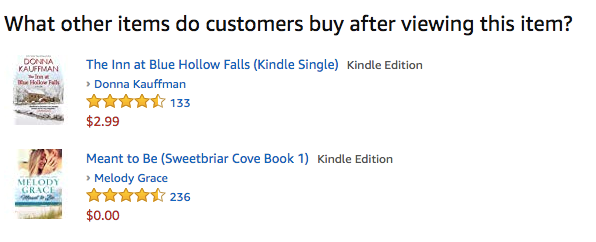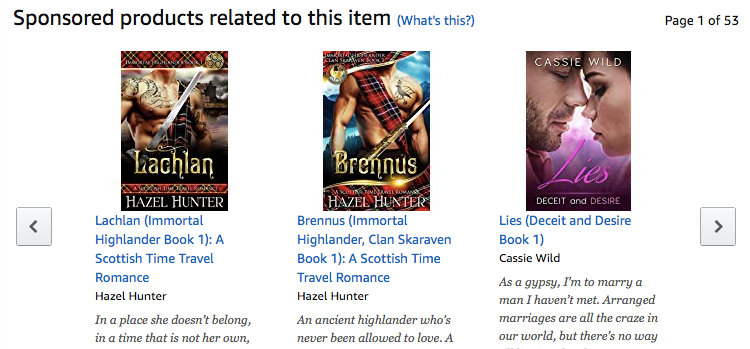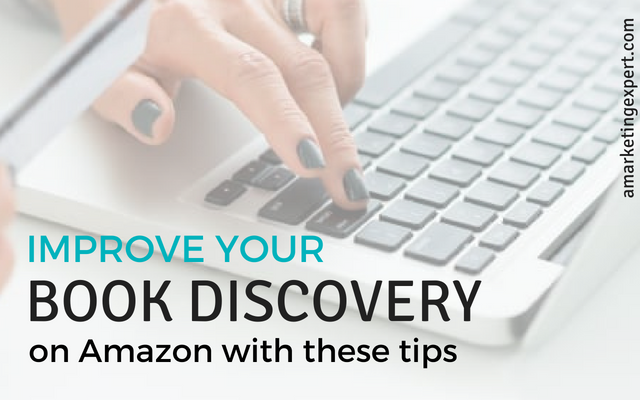I’ve been focused on book discovery lately because in my opinion, it’s largely misunderstood.
If you haven’t read my first three pieces that introduced this series I encourage you to do so, I started with what most authors are doing wrong in general.
Then I covered the most common issues and best practices with smart advertising.
Most recently I wrote about the importance of the reader experience and included a link to my free reader profile worksheet.
So now I want to move on to selling books on Amazon, how book discovery on the biggest book retailer has changed recently, and what you can do to improve your chances of getting discovered by your target buyer market.
[Tweet “Ready to improve your book discovery on Amazon? Here are some tips you need! via @bookgal #bookmarketing #bookpromotion”]
Book Discovery is About Breaking Through the Clutter
If you’re selling books on Amazon right now you’ve likely noticed they’ve been changing the site a lot lately.
More and more options, advertisements, and promotions are appearing on your book’s product page and I can tell you, it’s affecting your sales, and not in a good way.
I’ve used a client’s page as an example to show you an array of distractions, including but not limited to:
Alexa ads: These don’t directly compete with your book like other titles do, but Amazon ads for other products and services that they offer definitely compete for your potential buyer’s time and attention span.

What people buy after looking at your book: These are generally going to be competing titles, which is when smart book discovery strategies really help you break through the clutter.
And as an author myself I really don’t like these because it can imply they were preferred by other buyers. Honestly, it drives me nuts!
 Sponsored products (more competing titles): These are an ad option that Amazon Marketing Services offers, and the ones I often use myself, to be candid.
Sponsored products (more competing titles): These are an ad option that Amazon Marketing Services offers, and the ones I often use myself, to be candid.
They’re also tricky because when you’re doing the advertising, and working to improve your book discovery, it’s a great way to piggy back on another author’s exposure and target your buyer market.
But when you see them on your own page it’s hard not to cringe, thinking a shopper may get distracted and leave your product page.
Notice this author has 53“pages of sponsored ads to offer potential buyers, which means a there’s a lot of competition in this particular market. Crazy right?
 Book display ads (even more competing titles): This is the other format Amazon Marketing Services offers for book titles. The main difference is that these ads target a product or interest; they don’t use keywords like sponsored products do.
Book display ads (even more competing titles): This is the other format Amazon Marketing Services offers for book titles. The main difference is that these ads target a product or interest; they don’t use keywords like sponsored products do.
They also look more like a traditional website ad so that can also work for or against you, but we don’t have to debate that they also steal attention away from your potential buyer.
 Kindle Countdown Deals: These are limited time discount deals that Amazon is pushing. Plus, a lot of shoppers love a good sale.
Kindle Countdown Deals: These are limited time discount deals that Amazon is pushing. Plus, a lot of shoppers love a good sale.
The really dangerous part about this is that authors have a lot of deals to look through if they do leave your page for a moment to simply check it out, so the chances of them coming back to you are greatly reduced.
 In addition to these I’ve also seen Amazon testing recommendations and cross-promotions from Goodreads. These aren’t consistent, but I’m willing to bet money we’ll see more and more extras like that as well.
In addition to these I’ve also seen Amazon testing recommendations and cross-promotions from Goodreads. These aren’t consistent, but I’m willing to bet money we’ll see more and more extras like that as well.
So how to do you combat all these distractions and improve book discovery?
Well, not selling books on Amazon isn’t an option, but you can be smarter about what you do have control over.
[Tweet “Break through the clutter on Amazon with these book discovery tips via @bookgal #bookmarketing #sellmorebooks”]
A Book Cover Worthy of the Bestseller List
Book covers sell books. A good story or unique perspective sells future books.
I hear it all the time from authors, how unique a book is, how outstanding the writing is, how stand out the tips are, but none of that matters if your cover doesn’t sell the book first.
Genres and topics have specific expectations when it comes to what appeals to buyers. I think we’ve all either said to ourselves, or heard another person say, “This book looks like something I would read.” That’s what I’m talking about.
Don’t go cheap on your book cover. Find a designer with a good track record in your genre and work with them to come up with something that looks like it belongs on the bestseller list and fits in with all the titles readers are already buying.
An Enticing Book Title and Subtitle
Titles should also speak to your genre or topic. If the title doesn’t, the subtitle can pull that weight and meet potential buyer expectations.
I refer authors to this piece I wrote a lot, because it has some great examples of powerful, smart, creative subtitles that really help draw in the exact right readers for the book, and make the sale.
Using Your Keywords in a Smart Ways
Your keywords are crucial to book discovery. I’ve written so many pieces on keyword strategy, as well as a book (or three) so please take advantage of the Amazon Updates and Marketing Tips section of my blog or check out the latest edition of the book if you haven’t yet.
But when it comes to breaking through the clutter and actually selling books on Amazon, I want to remind you to use your keywords as often as you can in your book description, on your Amazon Author Central account (which I’ll discuss in a later piece), and even in your bio.
Be smart about it though, and by smart I mean clever. Don’t overstuff your product page with keywords in a way that cheapens your offering or cheapens your marketing efforts.
You may fool the Amazon algorithm for awhile, but you won’t fool potential buyers – they’ll ditch your page in a heartbeat.
Having a Description that Closes the Sale
Your book description, right after your cover, really helps secure that sale.
And when the content is good, it keeps buyers’ attention better. I wrote a piece with a lot of specific advice on descriptions here.
Fiction descriptions should start with a line that makes potential readers beg to find out more. Non-fiction should kick off by recognizing a potential buyer’s number one problem or issue they need solving.
Other features like bullets, bolding and italics all add a little something extra that make your book stand out, make you seem like an author that takes their own work seriously, and add some authority over your competition.
Not Underestimating the Power of Reviews
Reviews are crucial to book discovery. They’re also crucial to selling books on Amazon.
To be honest, I’m tired of authors balking when I talk about getting them more reviews. It happens all the time.
Unless you have 50+ positive reviews, you don’t have enough reviews. Really that number should be 100 or more.
Reviews help with your performance within Amazon’s algorithm immensely, but they don’t pull their weight if you don’t have enough, and you don’t keep them current.
So always be pushing for reviews, because unless the number of reviews match the number of sales, there are still readers out there to remind!
The Takeaway
Selling books on Amazon relies heavily on smart book discovery, and as I’ve discussed previously, discovery doesn’t happen through luck or by chance or because your story deserves it.
Effective book discovery happens when we, as authors, put the work in to make our titles stand out from the thousands of others being published every single day.
Again, if you haven’t read all the pieces in this series please take the time to do so, you’ll learn a lot of valuable insight about what’s worth your time and what’s wasting your time.
Please let me know how these tips are working out for you in the comments! I love getting your feedback.





Thanks for the useful info. It’s hard to get noticed on Amazon these days and I reckon it’s going to get more difficult as more authors self-publish!
Cindy, thanks for reading. I think the key here is going to be putting in the time to make yourself stand out and really personalizing things. It’s really interesting to watch things unfold. Please keep me posted on how these tips work for you!